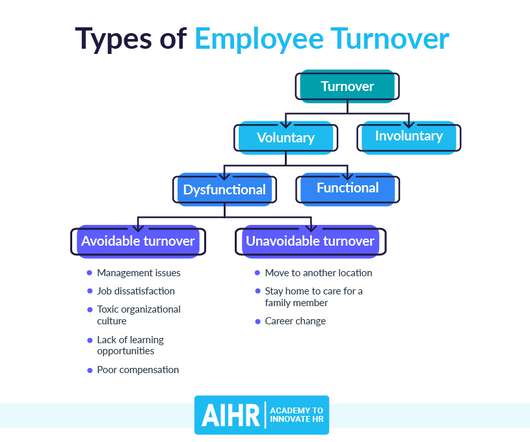HR Metrics for 2023: The Definitive Guide
Primalogik
JUNE 15, 2023
HR metrics help organisations measure performance data and make sense of it. In turn, this informs talent management decisions. Through the right metrics, HR managers and leaders can learn how to better support employees and strengthen results. To observe trends, HR should measure the same metrics over time.
































Let's personalize your content